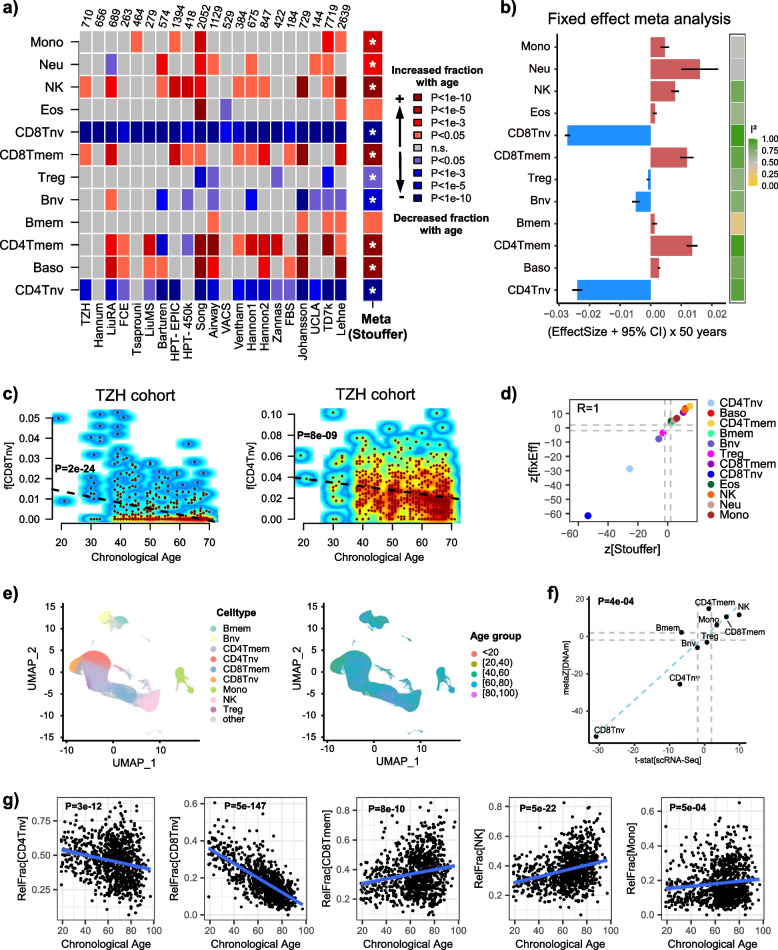Fig. 2.
Association and validation of immune-cell-type fractions with age. a Heatmap of associations between blood cell-type fractions and age in each of 21 cohorts. Cohort sizes are shown above heatmap. Colors indicate both directionality of change and statistical significance, as indicated, with the P-values derived from a multivariate regression that included sex, smoking status, BMI, and other confounders as described in “Methods.” Meta(Stouffer) indicates the directional Stouffer meta-analysis z-statistic and statistical significance. Associations marked with an * are significant after Bonferroni correction at 0.05 level (i.e., P < 0.05/11). b Barplot displaying the effect size estimates and 95% confidence intervals from a fixed effect inverse variance meta-analysis model. Estimates have been multiplied by 50 to reflect the percentage change over a 50-year period. Color bar to the right labels the I2 values of heteroscedasticity. c Smoothed scatterplots displaying the naïve CD8 + and CD4 + T-cell fractions with age in the TZH cohort. Black dashed line and P-value is from a linear regression. d Scatterplot of z-statistics from the directional Stouffer method, against the corresponding statistics from the fixed effect meta-analysis model. R-value of agreement is shown. Gray dashed lines indicate the line P = 0.05. e UMAP plots of the scRNA-Seq data of Yazar et al. profiling > 1 million PBMCs from over 900 donors of different ages. f Scatterplot of Stouffer z-statistics for each cell type derived from DNAm data, against the corresponding t-statistic from Propeller method based on the scRNA-Seq data. Linear regression P-value of agreement is given. g Examples of immune-cell fractions displaying significant associations with chronological age as inferred from scRNA-Seq data. P-values derive from Propeller

